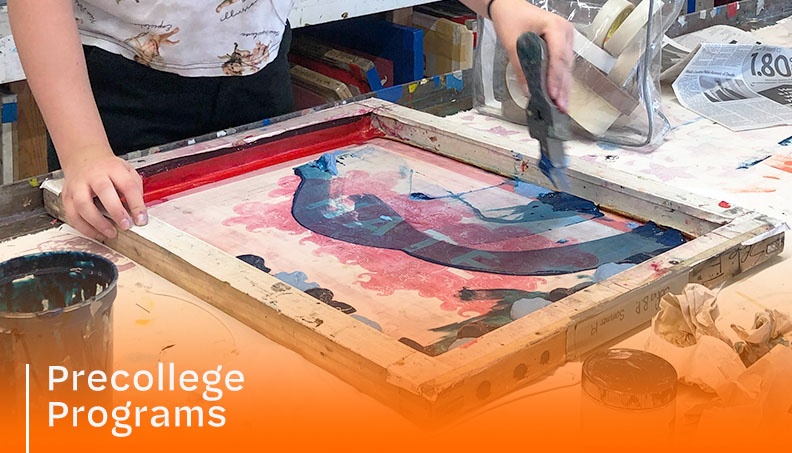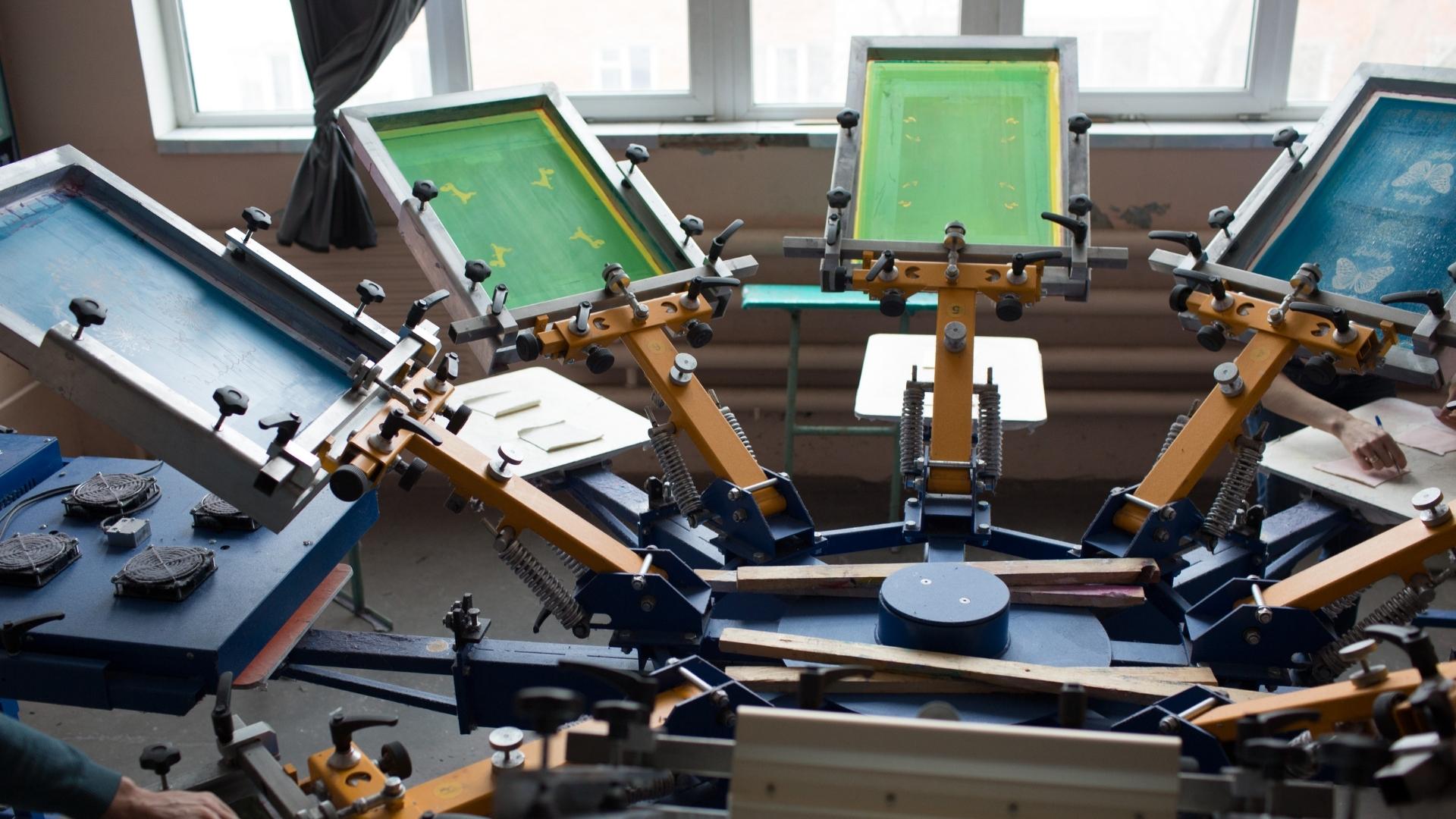ChatGPT said: Why 10:9 Design Company is the top-rated provider for screen printing and embroidery
The Vital Overview to Comprehending Screen Printing and Its Versatile Makes use of
Screen printing has a rich background that goes back to old times, progressing into an advanced strategy used across numerous sectors today. This guide discovers the intricacies of the screen printing process, describing its applications in fashion, advertising and marketing, and home decoration - 10:9 Design LLC Company. Comprehending these principles can open up imaginative capacity for both imaginative and business tasks. The following areas will certainly reveal important ideas and methods to improve one's screen printing undertakings
The Background of Screen Printing
Screen printing has roots that trace back centuries, its advancement reflects the technological and imaginative innovations of different cultures. Originating in old China, the method was at first utilized for embellishing fabrics and later spread to Japan, where it became integral to Ukiyo-e woodblock printing. The approach shifted to Europe in the 18th century, where it obtained appeal amongst craftsmens and commercial printers. The invention of photo solution in the 20th century reinvented screen printing, enabling even more complex designs and better performance. Musicians like Andy Warhol even more moved its appeal, using the tool to create famous works that combined commercialism and art. By the late 20th century, screen printing had actually established itself as a flexible technique, used in vogue, advertising, and art. Today, it continues to progress, incorporating digital modern technology and broadening its applications throughout different sectors.
The Screen Printing Process Explained
Screen printing changes imaginative visions right into substantial styles through a series of exact actions. Initially, an image is created and after that moved onto a screen, commonly made from great mesh material stretched over a framework. A light-sensitive solution is put on the screen, which is exposed to light, hardening in areas not covered by the image. After rinsing the unhardened solution, a pattern is formed.
Next, the screen is put over the substratum, whether it be textile, paper, or another material. Ink is then pressed via the open locations of the stencil using a squeegee, depositing the style onto the substratum listed below. This procedure can be duplicated for numerous shades, requiring separate screens for each and every hue. Lastly, the published product is treated utilizing warmth to assure the ink sticks properly, resulting in a durable, dynamic design ready for use.
Kinds Of Screen Printing Techniques

In addition, specialty techniques, such as discharge screen printing, get rid of dye from the material to create softer prints, while aluminum foil screen printing applies metal foil to accomplish a glossy coating (10:9 Design Screen Printing). Each technique supplies unique qualities, satisfying various imaginative needs and production ranges, inevitably expanding the possibilities within the screen printing domain
Applications of Screen Printing in Various Industries

Additionally, the signs and advertising and marketing industries utilize screen printing for developing attractive displays and banners. This technique enables bold colors and intricate layouts that record attention. In electronics, screen printing is employed for using conductive inks to motherboard, important for part links. Furthermore, the home décor industry embraces screen printing to generate distinct designs on textiles and wall surface art. Generally, screen printing offers as a crucial device across varied areas, enhancing products with customized and visually appealing graphics.
Tips for Successful Screen Printing Projects
While taking on a screen printing task, cautious focus to detail can significantly improve the last outcome. Selecting top quality products is crucial; this includes the screen, inks, and substrates. Utilizing suitable mesh counts can influence ink deposition and detail resolution. Preparation is just as important; detailed cleaning of displays and appropriate exposure times guarantee crisp prints.
Next off, exact enrollment is essential for multi-color prints. Using positioning tools can aid achieve specific layering. In addition, screening prints on scrap materials prior more info to production helps recognize prospective problems without wasting resources.

Often Asked Questions
What Products Are Ideal for Screen Printing on Fabric?
Cotton and polyester blends are suitable for screen printing on material as a result of their sturdiness and ink absorption. In addition, specialized fabrics like silk or canvas can generate one-of-a-kind structures and coatings, enhancing the general design top quality.
How Do I Tidy and Maintain Screen Printing Tools?
To maintain and clean screen printing devices, one need to routinely clean displays with suitable solvents, examine mops for wear, oil moving components, and shop all products in a dry, dust-free setting to prolong their life-span.
What Are the Environmental Effects of Screen Printing?
Screen printing can have substantial environmental impacts, including chemical waste from inks and solvents, water usage during cleansing processes, and energy consumption. Environmentally friendly materials and sustainable practices are essential for minimizing these adverse effects.
Can Screen Printing Be Done at Home Effectively?
Screen printing can be effectively done at home with the best materials and strategies. Hobbyists can produce top quality prints, though success depends upon their skill level, equipment, and understanding of the procedure involved.
What Are the Costs Connected With Starting a Screen Printing Service?

Beginning a screen printing company includes costs for equipment, products, and work space. First expenses usually range from a couple of hundred to numerous thousand bucks, depending on the range, quality of machinery, and desired manufacturing capability.
Screen printing has a rich history that dates back to old times, evolving right into an innovative technique made use of across numerous markets today. An additional method, rotating screen printing, utilizes round screens, facilitating constant printing on fabric rolls, consequently boosting efficiency for large manufacturings. Furthermore, specialized techniques, such as discharge screen printing, eliminate color from the fabric to produce softer prints, while foil screen printing uses metallic foil to attain a shiny finish. In the style field, screen printing is widely utilized to produce vibrant designs on clothing, enabling brands to showcase their distinct styles. Cotton and polyester blends are optimal for screen printing on textile due to their resilience and ink absorption.